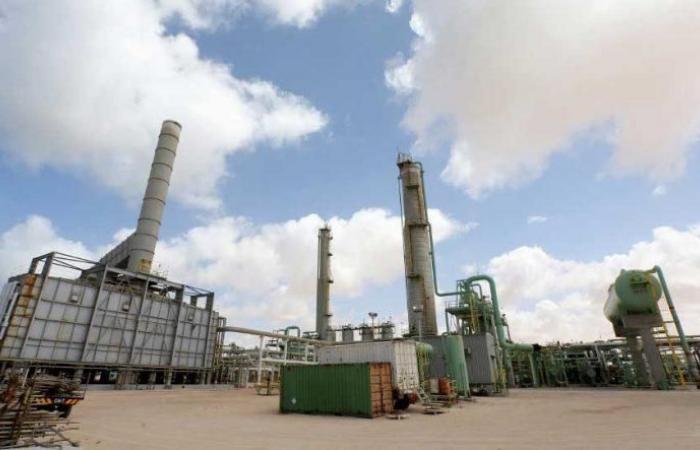Cairo – Reuters: The blockade imposed on Libyan oil facilities has been partially lifted, allowing some ports and fields to reopen gradually, but the full recovery of production faces obstacles and uncertainty.
As for basic facts that can help answer this question.
Why was Libyan oil under siege?
□ Eastern Libyan forces (the Libyan National Army) led by dissident Field Marshal Khalifa Haftar imposed a blockade on most Libyan oil fields and ports in January.
Eastern Libyan forces were launching an offensive to control the capital, Tripoli, saying they wanted to stop the misuse of revenues by the armed factions that control the capital and the internationally recognized Government of National Accord backed by Turkey.
It also cited longstanding claims that eastern Libya, which has the most oil reserves, is not receiving its fair share of the revenue.
Oil revenues have always fallen under the authority of the Tripoli-based central bank, which pays government employees’ salaries across the country.
The factions that moved to eastern Libya in 2014 as part of a wider conflict have repeatedly tried to sell oil independently, but to no avail.
The blockade was seen as an important pressure card for Haftar and his external supporters, including the UAE, Egypt and Russia.
Why have the ports and fields reopened?
□ The attack of eastern Libyan forces on Tripoli collapsed in early June, and retreated to the east, but they remained in control of Sirte, the Libyan Oil Crescent Gate and its four ports.
On September 18, Haftar announced that the blockade would be lifted after eastern Libyan forces concluded a surprise agreement with Ahmed Maitiq, deputy head of the Government of National Accord.
This was followed by mounting pressure from the United States and appeals from the United Nations mission, in light of the worsening economic damage caused by the blockade and the closure of ports, exacerbating the power outage crisis in eastern Libya.
Data issued by the two sides indicate that a joint committee will negotiate ways to spend oil revenues after the resumption of production.
How sustainable is the resumption of production?
□ The “National Oil Corporation” said that it will resume operating facilities where there are no armed men. For years, the corporation has sought to neutralize the threat from local factions and the Petroleum Facilities Guard, the force responsible for protecting oil assets, but it also includes armed groups with fickle loyalties and has previously closed facilities several times to pressure to meet political demands.
The demand for withdrawing fighters was complicated by the military reinforcement of the forces of both sides during and after the eastern Libyan forces’ attack on Tripoli, as well as the presence of foreign fighters and mercenaries from countries such as Russia, Syria and Sudan.
The resumption of oil production remains politically fragile due to concerns in western Libya that eastern forces will directly control oil revenues and potentially use them to pay off huge debts and pay wages for fighters they have been using since 2014.
Diplomats and analysts say that the funds are currently deposited in the account of the “National Oil Corporation” in the Libyan Foreign Bank, pending the outcome of political negotiations on a unity government and important institutions such as the Central Bank.
But that task has eluded mediators led by the United Nations for the past six years. Meanwhile, some foreign countries have tried to marginalize Haftar, but he remains a pivotal player in the east. He said that the blockade would be lifted initially for one month.
■ What are the production possibilities?
□ The National Oil Corporation said that its initial goal is to resume production of 260 thousand barrels per day, up from less than 100,000 barrels per day, but it remains a small amount compared to more than one million barrels per day that the country produced before the blockade.
Before the uprising in Libya in 2011 and the turmoil that followed, production was 1.6 million barrels per day.
The National Oil Corporation has ambitious plans to raise production to more than two million barrels per day, but the conflict and blockade have reduced investments and caused the deterioration of the infrastructure.
Who controls production and exports?
□ The “National Oil Corporation” in Tripoli fully controls production and exports. The corporation runs joint projects with foreign partners such as Eni, Total, Repsol, OMV, Equinor, Hess Corp., ConocoPhillips and Winterchall.
These were the details of the news To what extent can the Libyan oil sector recover with the... for this day. We hope that we have succeeded by giving you the full details and information. To follow all our news, you can subscribe to the alerts system or to one of our different systems to provide you with all that is new.
It is also worth noting that the original news has been published and is available at saudi24news and the editorial team at AlKhaleej Today has confirmed it and it has been modified, and it may have been completely transferred or quoted from it and you can read and follow this news from its main source.

